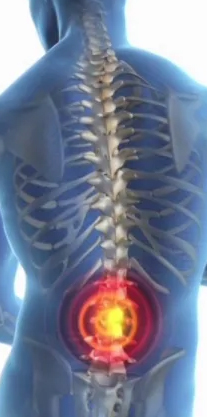Childhood Spinal Cord Tumor Cancer – Stages and Prognosis
 The central nervous system (CNS) is composed of the brain and the spinal cord, a delicate and sensitive column of nerves protected by the boney vertebrae of the spine. Statistically, CNS cancers are all grouped together as “brain and spinal cord tumors”, but of course in reality, there are a number of different and distinct types of spinal cord tumors, and each specific tumor requires a unique treatment approach and carries its own outlook for long-term survivorship.
The central nervous system (CNS) is composed of the brain and the spinal cord, a delicate and sensitive column of nerves protected by the boney vertebrae of the spine. Statistically, CNS cancers are all grouped together as “brain and spinal cord tumors”, but of course in reality, there are a number of different and distinct types of spinal cord tumors, and each specific tumor requires a unique treatment approach and carries its own outlook for long-term survivorship.
When diagnosing cancer in either children or adults, oncologists usually differentiate between malignant (cancerous) cell growths or benign (non-cancerous) tumors. This distinction is much less important for spinal cord tumors, however. First, spinal cord tumors may spread within the CNS but rarely spread into other organs. Second, both malignant and benign tumors can be extremely life-threatening. As the tumor grows, it can press on and potentially restrict critical tissues of the CNS. Thus, both malignant and benign tumors can cause similar symptoms and have similar prognosis factors; both may require an aggressive treatment approach.
There is another critical difference between spinal cord tumors and other types of childhood cancer, also related to diagnosis: staging. When diagnosing most types of childhood cancer, oncologists will determine the cancer’s stage, or how far it has spread beyond the original point of growth. However, staging is not usually appropriate for spinal cord tumors, because as noted above, they do not, in most cases, spread into other organs or body systems. Instead, when determining an appropriate treatment option for a spinal cord tumor, oncologists will focus on key “prognosis factors”.
Key Prognosis Factors for Spinal Cord Tumors
Rapid advances in our knowledge of the central nervous system, as well as in available medical technology, mean that treatment options for children coping with a spinal cord tumor are more focused, more powerful, and more effective than ever before. And for many children, this means that the prognosis, or outlook, is excellent: statistically, about 75% of children with a tumor of the central nervous system are likely to survive more than 5 years.
However, a very basic statistic about 5-year survival rates hides a great deal of variation between specific types of tumors. In fact, each child’s long-term prognosis depends on a unique assessment of his or her key prognosis factors. These prognosis factors determine the unique treatment approach appropriate for your child’s unique diagnosis. In general, the key prognosis factors for most types of spinal cord tumors include:
- The type of tumor
- The size of the tumor at diagnosis
- The location of the tumor at diagnosis
- The “grade” of the tumor, or how quickly it is growing (grade I and II tumors usually grow slowly; grade III and IV tumors are more invasive)
- How much, if any, of the tumor can be removed with surgery
- Whether the tumorous cells have particular gene changes (mutations)
- Whether the tumor has spread to other parts of the CNS
- Whether tumorous cells have spread beyond the CNS
- The child’s age at diagnosis
- The child’s functional abilities as impacted by the tumor at diagnosis
If your child has been diagnosed with a spinal cord tumor (whether benign or malignant), his or her oncologist will help you understand all of these prognosis factors as they relate to your child and his or her specific type of tumor. While the general guidelines listed here and in other similar literature are important, they are just that: general. Only your child’s oncology team can determine your child’s key prognosis factors and the implications of those prognosis for late effects and long-term survivorship.
More about Childhood Spinal Cord Tumor Cancers:
- About Childhood Spinal Cord Tumor Cancer – Detection and Diagnosis
- Causes, Risk Factors, and Prevention of Childhood Spinal Cord Tumor Cancer
- What are the signs and symptoms of Childhood Spinal Cord Tumor Cancer?
- Spinal Cord Tumor Cancer Treatment
- Spinal Cord Tumor Cancer – Stages and Prognosis
- What is the expected life span of Childhood Spinal Cord Tumor Cancer?
- After Treatment – Living as a Childhood Spinal Cord Tumor Cancer Survivor
Learn More About the Different Types of Childhood Cancers:
- Childhood Brain Tumor Cancer (Brain Stem Tumors)
- Spinal Cord Tumor Cancer
- Childhood Neuroblastoma Cancers
- Childhood Hodgkin Lymphoma Cancers
- Non-Hodgkin Lymphoma Cancers
- Wilms tumor (Kidney Tumors)
- Rhabdomyosarcoma
- Retinoblastoma
- Bone cancer (including osteosarcoma and Ewing sarcoma)
- Leukemia Cancers: Acute lymphocytic (lymphoblastic) leukemia (ALL) Acute myelogenous leukemia (AML); Juvenile myelomonocytic leukemia (JMML)
- Hepatoblastoma (Liver Cancer)
- Rhabdoid Tumors
Together, we can make a difference.
Donate today because kids can’t fight cancer alone®.
About American Childhood Cancer Organization
The American Childhood Cancer Organization was founded in 1970 by parents of children and adolescents diagnosed with cancer. As the nation’s oldest and largest grassroots organization dedicated to childhood cancer, ACCO is committed to shaping policy, supporting research, raising awareness, and providing free educational resources to kids with cancer, survivors, and their families. Additionally, ACCO is the sole U.S. member of Childhood Cancer International (CCI) and has helped support more than half a million families over the past 50 years. Help make childhood cancer a national health priority because kids can’t fight cancer alone®.
For more information about how ACCO can help your family, call 855.858.2226 or visit:



